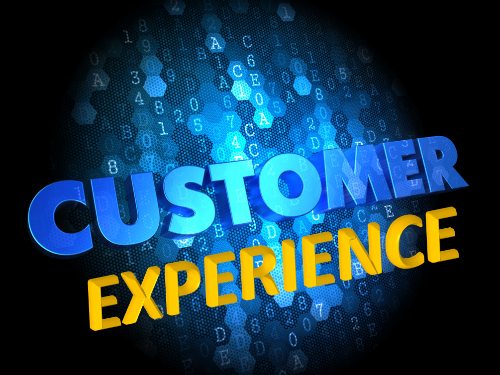The customer is king — and the king expects to be treated royally. Kelly McKesten and Stéphanie Thomson, respectively a producer and an editor with Think with Google, report the phrase “the customer is king” can be traced back to the 1930s in book written by William Harold Hutt entitled Economists and the Public: A Study of Competition and Opinion. They assert the phrase has never been more relevant. “After all,” they write, “if someone isn’t happy with the experience, product, or price a company offers, endless other options are just a click away.”[1] Staff members at CIO Review agree. They add, “Digital consumers demand and expect a brand to exceed their expectations every time they deal with a brand. The customers have a wide array of choices when it comes to choosing the right product to buy and would always go with the best in the market that fits their budget. Delivering a remarkable customer experience (CX) is crucial for a business to survive in this age of digital transformation.”[2] They add, “Customer experience is defined by interactions between a customer and an organization throughout their business relationship which can include awareness, discovery, cultivation, advocacy, purchases, and service.”
Overcoming bad customer experiences
Social media will let you know if your organization has been involved in some poor customer experiences. Should that happen, Laura Patterson, president and founder of VisionEdge Marketing, suggests using some root cause or “3X5 Why” analysis. She explains, “For those of you not familiar with 3X5 Why, it is often used to address non-conformance issues. To paraphrase supply chain expert John Casey, this is a method to identify causes and help you see issues that broadly effect the overall process. The benefit of this approach is that it changes your focus from reacting to individual issues, to fixing the processes that cause the issue. The goal is to understand and tease out the root cause for three primary dimensions: 1) How did the problem occur? (“specific process break”); 2) How did the problem escape detection? (‘detection failure’); [and] 3) What occurred in the system that enabled the specific process break. For each of these three dimensions, sometimes referred to as ‘legs,’ you apply a technique that repeats the question ‘Why?’ [five times]. As you move from asking ‘Why?’ each time, the goal is to identify the cause and effects — peeling the onion one layer at a time until you get to the core of the problem, or root cause. Seems simple enough.”[3] Root cause analysis is a good technique to find out what went wrong; nevertheless, you still need to develop a strategy so things go right moving forward.
Creating great customer experiences
The CIO Review staff insists, “Organizations have to invest in customer experience to make sure their customers stay loyal.” McKesten and Thomson suggest delivering personalized experiences and providing a seamless path to purchase should be part of a good customer experience strategy. Concerning the former, they write, “Not that long ago, brands could get away with blasting the same ads at different people, regardless of their individual tastes and preferences. But today, customers want something more personal. For example, 63% of people expect brands to use their purchase history to provide them with personalized experiences.” With regards to providing a seamless path to purchase, they write, “Customers constantly move across different platforms. For example, our research found that 80% of people say they typically switch between online search and video when researching products to buy. To meet growing customer expectations, then, brands have to create a seamless experience across all these channels.”
Obviously, neither personalization nor a seamless path to purchase can be achieved manually. Today’s leading businesses leverage the power of artificial intelligence (AI) to achieve these goals. Alston Ghafourifar, CEO of Entefy, and Michael Evans, Managing Director of Newport Board Group, writes, “Successfully creating seamless experiences can be a significant competitive advantage, especially in industries where product or service differentiation is narrow. With the advent of artificial intelligence, companies can now improve CX by learning more about the customer and anticipating their needs. Many CX-focused brands are deploying artificial intelligence technologies strategically at key customer touch points.”[4] It would be nice if great customer experience could be provided by AI alone; however, great customer experience is a team effort. Denise Lee Yohn (@deniseleeyohn), a brand leadership expert, suggests three complementary strategies for achieving great customer experience.[5] They are:
1. Start a CX innovation lab. Yohn explains, “Similar to a product or business innovation lab within a company, a CX innovation lab is a dedicated space, process, or program in which participants focus on identifying, developing and testing new CX ideas. How isolated and independent the lab is from the rest of the organization and its operations can differ significantly and should be based on a company’s existing culture, the priority it places on CX innovation, and the leadership of the lab. But in general, the objective of a CX innovation lab is to facilitate a test-and-learn approach to CX.”
2. Offer company-wide CX training. According to Yohn, “CX is a multidisciplinary effort which impacts and involves all functions of a company. As such, you need to cultivate a CX mindset and skill set throughout your organization. While the marketing and digital teams might require advanced, in-depth training on developing and applying customer insights or working with certain data or platforms, everyone in your organization should at least be exposed to the basics of CX. Everyone needs to know in their heads who your customers are and what their needs and journeys are; they need to be motivated in their hearts to adopt new ways of doing and thinking; and they need to be empowered with their hands and feet to implement new CX programs and work together to support your desired CX.”
3. Enroll everyone in solving CX problems. “Although it makes sense for a single department or group to spearhead CX design and development,” Yohn writes, “you can also benefit from democratizing the effort. Not only can people throughout your organization contribute different customer perspectives from their different backgrounds and exposure to customers, they also can contribute a breadth of ideas on what’s possible to meet customers’ needs. You should develop a formal system for encouraging and capturing these inputs.”
Patterson observes, “Positive customer experiences boost retention, repeat purchases, increased share of wallet, and word-of-mouth referrals — all good things for the bottom line.” Combining root cause analysis along with Yohn three strategies provide a firm foundation for a great CX strategy.
Concluding thoughts
Great businesses ensure proper attention is given to people, processes, and technology. CX is no different. Having the right technology in place is important; but, so is having the right people with the right attitude. Yohn concludes, “Thomas Edison once famously said that genius is 1% inspiration and 99% perspiration — CX innovation operates under the same principle. You must put in the work to initiate, cultivate and pursue it.”
Footnotes
[1] Kelly McKesten and Stéphanie Thomson, “Customer expectations are changing. Here are 3 ways brands can keep up,” Think with Google, November 2018.
[2] Staff, “Why Customer Experience Strategy is Important,” CIO Review, 1 February 2019.
[3] Laura Patterson, “Getting to the Root Cause of a Poor Customer Experience,” IndustryWeek, 24 May 2018.
[4] Alston Ghafourifar and Michael Evans, “Build A 5-Star Customer Experience With Artificial Intelligence,” Forbes, 17 February 2019.
[5] Denise Lee Yohn, “Spark Customer Experience Innovation With These Three Strategies,” Forbes, 5 March 2019.





